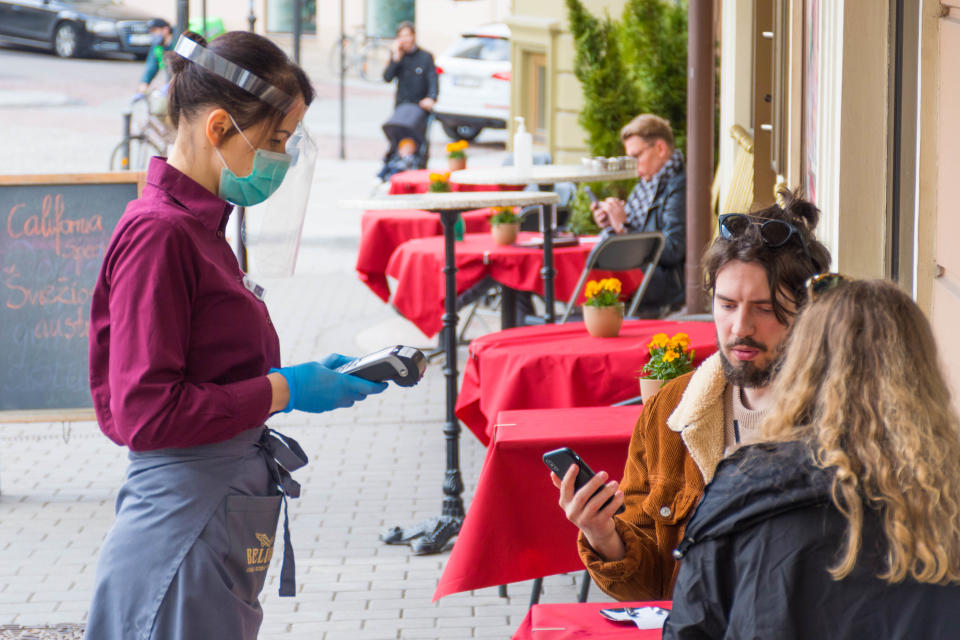Coronavirus: Numbers eating out in UK surpass pre-lockdown levels by a quarter

The first two weeks of the UK government’s Eat Out to Help Out dining scheme has seen the number of people eating in restaurants from Monday to Wednesday increase by an average 26.9% year-on-year.
This compares to an average 21.3% year-on-year decline for Thursday to Sunday in the same period, according to data published by OpenTable, a restaurant booking service.
One effect of the scheme is that it has encouraged some restaurant goers to eat out Monday to Wednesday, instead of during the other days, according to the Centre for Economics and Business Research (CEBR).
Looking at the annual change in diner numbers for the whole week commencing August 3, on average the total was down 7.1%, compared to a decrease of 28.2% for the week before the scheme started.
Even accounting for the redistribution effect, the net impact of the scheme is a desirable one, says CEBR.
Two weeks ago, CEBR estimated that the coronavirus pandemic has resulted in £2.3bn ($3bn) of spending in shops, pubs and eateries near London employment hubs being lost or displaced between March and June, as a significant share of the city’s workers continue to work remotely.
In August, this is set to reduce to a loss of £178m and Eat Out to Help Out will be partially responsible for the return of activity.
READ MORE: 73% of UK business leaders predict office downsizing in the coming year
The Eat Out to Help Out scheme will help businesses recapture some of this lost income in two ways. The first way is the obvious one - the discount is encouraging more people to spend money in eligible restaurants.
The second way in which the scheme is helping along the economic recovery is less direct. While the name of the scheme is Eat Out to Help Out, the sentiment is clearly Get Out to Help Out. The goal isn’t just for people to eat in restaurants, but also to get back into the habit of socialising, making non-essential journeys, and being surrounded (albeit not too closely) by groups of strangers, argues the CEBR.
It is arguably this push towards normality that will prove the biggest benefit of the scheme. Having realised that the economic downturn facing the UK will be deeper and more prolonged if central London and other urban areas remain ghost towns, the government has been trying for some weeks now to nudge people towards their former lifestyles, for example by softening its advice on home working.
Judging by the restaurant visits data (and the sounds of clicking glasses and chatter in newly busy restaurant areas) it seems that by restoring confidence and giving people a taste of the old normal, Eat Out to Help Out is doing more to help the UK’s return to normality than the many changes in government guidance have, CEBR concludes.

 Yahoo Finance
Yahoo Finance